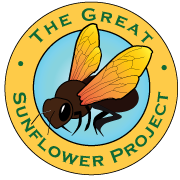There are a variety of errors we have picked up in my field guide to Common Bees of California. Special thank yous go to Peter Rauch, Robbin Thorp and Celeste Ets-Hokin for their careful reading and eye for detail. The page is listed and then the correction. Can't wait to clean these up when we get to a 2nd printing.
8 Perdita is not a sweat bee. It is a mining bee.
10ff Bees to not have an ovipositor. It was modified to a sting (stinger) in ancestors, and no longer involved in egg laying
13 “one suture below each eye” [should read antenna not eye]
14&17 Refers reader to Fig. 1 for male with 13 antennal subunits. But Fig. 1 is female
23 Table 1: Host of Ericrosis is Centris not Anthophora.
26 Anthophora bomboides nest in sandstone cliffs not in sand.“We divide cavity nesters” [should read “solitary bees” not cavity nesters]
27 Osmia nemoris does not use mud. Uses leaf mastic
33 Bumble bees are not “semisocial” They are primitively eusocial
52-55 Honey bee sidebar:
1) Should use “stinger” for “ovipositor” [several places]
2) Langstroth discovered “bee space” in 1851 and patented it in 1852. [Long before 1862 date given here]
3) Swarm: “following queen as she searches for new home” [Actually workers search for new home]
4) Nectar is actively evaporated by worker honeybee spreading in thin layers on proboscis & in comb cells, then by fanning it. [Not left to evaporate by itself in honeycomb]
5) “combs darken from original white due to “pollen oils and propolis added” [Propolis is not added to honeycomb] Darkening of honey comb primarily due to accumulation of old cocoons from generations of developing brood]
59: States: "Appendix 1 provides a California species list." Should state: "...a California families and genera list"
72 Agapostemon: Some females “have a black-and-yellow striped abdomen.” [None in CA or western US have this]
90 Megachilidae: 1) Labrum: “wider than long” [SHOULD SAY longer than wide]
93-95 Anthidium: 1) “These bees are known as mason bees…” [SHOULD BE Wool carder bees] 2) “Others construct nests of resin and pebbles, placing them on branches of trees.” SHOULD BE DIANTHIDUM
107 Hoplitis: “end flagellomere…hooked” [only in males of some species]
115 Peponapis: “Males have…very short antennae.” [only in comparison to other Eucerini] [actually longer than in males of non-eucerine bees of comparable size like Diadasia for instance]. Xenoglossa: Only X. strenua similar to Apis. X. angustior larger, with red metasoma.
117 Habropoda: “…some have bands in the outer covering of the body (integument)” [None in CA]
122 Anthophora: A. furcata [Not in CA, but closely related A. terminalis is]; “Brood cells are lined with an oily substance” [Waxy not oily];
124 A. bomboides: “nests in aggregations… in dune areas…” [No. nests in vertical, hard, sandstone cliff faces].
133 Diadasia: A better name might be Mallow bees. “Males have very long antennae…” [No] Not tribe Eucerini [tribe Emphorini];
138:: "The males can be territorial and may buzz around humans but rarely sting." Should state: "...but do not sting." (See page 142, "...male bees do not have stingers.") Darn, if I know anything, I know that male bees don't have stingers!
140 Xylocopa: “They rob flowers of nectar by chewing holes in…” should say pierce as they pierce with maxillae rather than chew (with mandibles)
144 Ceratina: “…femur (part of the leg closest to the bee’s body).”
[coxa and trochanter are closer to body]
145 Eucera: [Tetralonia as currently defined does not occur in NA.] [Previously used for our Eucera (Synhalonia) over 50 years ago.]
156-7 Appendix 2: Andrena: [may have 2 or 3 submarginal cells]
Triepeolus: “beveled” [What?]
Hoplitis: [some are bright green; some have red markings]
[Only some males have hooked apical flagellomeres]
Anthophora: [some have white or yellow markings]
Xylocopa: [Some with yellow markings]
158-9 Dufourea: [Black or brown, Dull metallic]
Tetraloniella: [Black or brown]
Perdita: [White or yellow markings]
Lasioglossum: [White or yellow markings]
Sphecodes: [2 or 3 submarginal cells]
Anthidium: [6 teeth on mandible – females only]
Panurguinus: [marginal cell is not elongate, but truncate.]
Ashmeadiella: [Red markings]
161 Glossary: Abdomen: Third “segment” of an insect [3rd body part]
Coxa: part “closest to the “abdomen” [thorax, not abdomen]
Thorax: Second “segment” of an insect [2nd or middle body part]
Typos:
10 “and tibia tarsus” [should read “tibia and tarsus”]
23 Andrena linsleyi, not “busleyi”
96 Megachile: M. perihirta not M. periherta [also for Figure label on p. 97]
122 Anthophora: “It also resemble…” [resembles];
133 Diadasia: “Diadasia is a diverse species.” [“genus” not species];
Head: “…narrower than the tip of the thorax.” Should read "top of the thorax"
138 Melissodes: “Triepeolus larva…eats the provisions that the Triepeolus female had gathered…” [latter Triepeolus should read Melissodes]
142 Xylocopa: “They burrow into pithy stems of wood…” [“or” not “of”]
144 Ceratina: “…females have scopae on the backs of their legs,…” SHOULD read "back legs"
Figure Label Errors:
9-10 Fig 1 & text (Fig a Halictid?: head shape & basal FW vein):
Head: Facial fovea, single subantennal suture, Halictid head don’t fit
Bees to not have an ovipositor. Modified to a sting (stinger) in ancestors,
as in text, but no longer involved in egg laying
10 “and tibia tarsus” [should read “tibia and tarsus”]
16 Fig. 5 (upper, Apis hind leg): Should read “corbicula” not scopa; Delete “tibial spine”
[Label is nearest basal angle of basitarsus = auricle of pollen press]
(bottom, Megachile. abdomen): No pygidial plate in Megs.
113 Apis (Fig, lower): “corbicula” mislabeled. [points to basitarsus not tibia]
Figure Errors:
99 Fig. M. apicalis (profile): Scopal hairs on S-5 & S-6 should be black, not white.
107 Ashmeadiella: Figure is male [side view of Figs on p 106, head, antennae, T-6], but “scopa” label added to profile view, erroneously suggesting a female
[Male sternal hairs are moderately long, but over emphasized in figure]
134 Diadasia: D. bituberculata figure [scopa should be all black not white]
